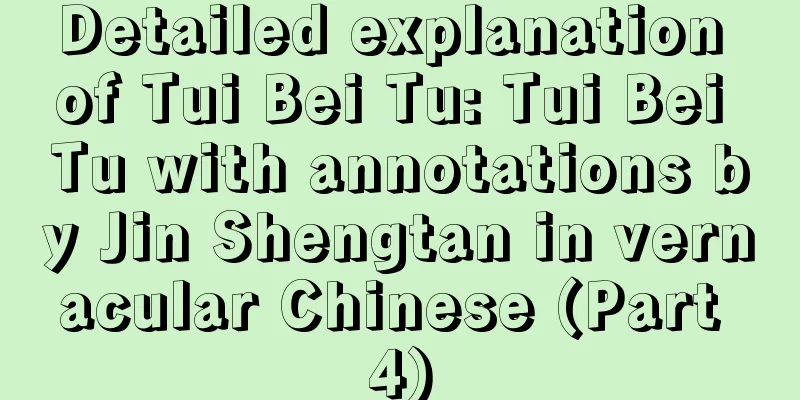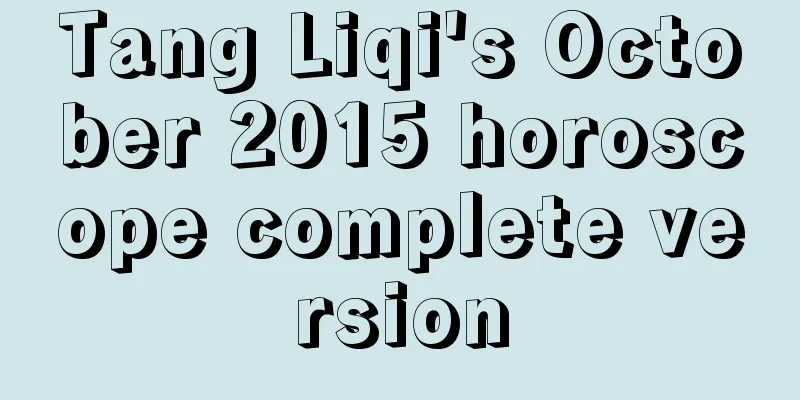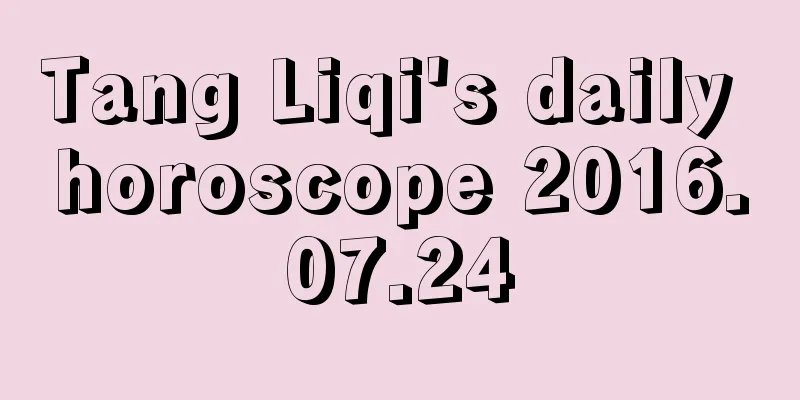Detailed explanation of Tui Bei Tu: Tui Bei Tu with annotations by Jin Shengtan in vernacular Chinese (Part 4)

|
The two thousand years of history predicted in "Tuibei Tu" have all been confirmed, but there are many versions of "Tuibei Tu". Six main versions are known, and the current standard version is the one with Jin Shengtan's comments on 60 images. Next, please read the vernacular version of Tui Bei Tu with annotations by Jin Shengtan (IV), for detailed explanations of the 19th to 24th images. Detailed explanation of Tui Bei Tu: Tui Bei Tu with annotations by Jin Shengtan in vernacular Chinese (Part 4) 19th Xiang: Renwu (Great Defeat of Pingrong) Prophecy The 20th Xiang Guiwei (Cai Jing's chaotic politics) Prophecy |
<<: April 27, 2017 Lunar calendar auspicious days and times list
>>: Shop Feng Shui for Wealth: Feng Shui Placement Tips and Taboos for Shop Cashier Counter
Recommend
Susan Miller Daily Horoscope 2016.10.16 Weekend Horoscope Just follow your heart
Destiny is in the hands of the strong, not decide...
Nice boy names with the surname Jiang
Nowadays, many parents have realized that giving ...
Zodiac Matching: Are Libra men and Pisces women compatible?
Are Libra men and Pisces women compatible? Are Li...
The 12 constellations ranking: The constellation women who will be spoiled by handsome men for a lifetime
Some girls of certain zodiac signs are so lucky t...
Cat Stone Dialogue Daily Meow Fortune 2018.01.22
For the month ahead, the Sun will be shining brig...
Dreaming that a relative is about to die, try to communicate honestly with acquaintances
What does it mean to dream that a relative is abo...
What is the best month for marriage for people born in the Year of the Rat?
Which month is best for people born in the Year o...
Nice names for baby girls with the surname Niu in 2022
A selection of nice-sounding names for baby girls...
Why do we eat young chickens during the Great Heat? Eating young chickens during the Great Heat is not only a folk custom.
Why do we eat young chickens during the Great Hea...
What are the do's and don'ts of moving and setting up a bed in 2017?
When moving into a new house, installing the bed ...
What does it mean to dream about crying?
What does it mean to dream about crying? What doe...
Boys' names with the character "Huai"
A name is a birth gift given to us by our parents...
Test whether the marriage is long-lasting. The cup can actually determine your marriage.
When you see the following four types of cups for...
What is the fortune of a tiger baby born on March 26, 2022?
I believe that in every family, children are the ...
A nice name for a girl with the surname Ai
Nowadays, many parents have realized that giving ...









